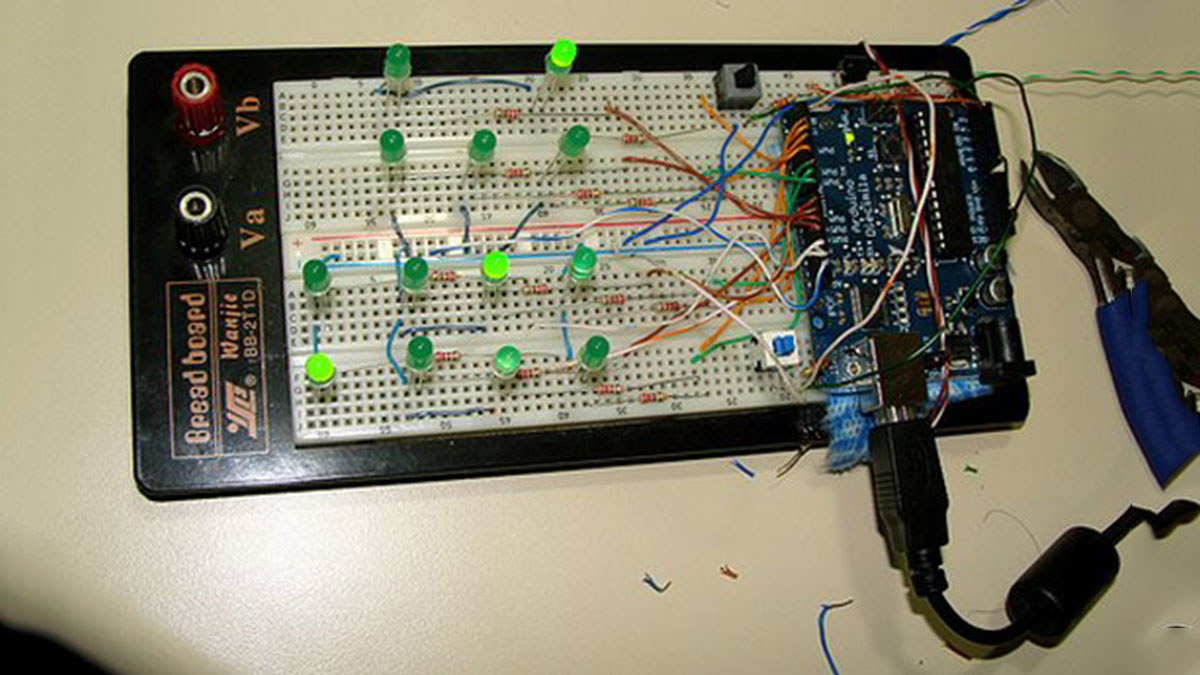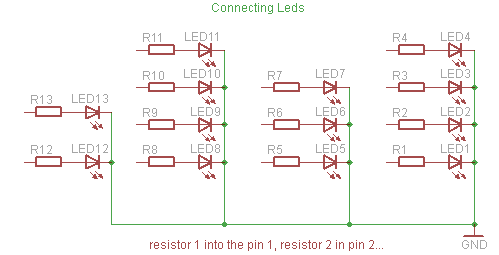Yesterday I was going to start watching a movie, when me and my friend pedro decided to give up on the movie and build a binary clock. After sometime thinking on how to program it, we made it. It works beautifully, so I decided to show here how I’ve done. It may not be the easiest way to make it work, but that’s what we’ve done.

Parts:
– Arduino
– 13x Leds (You choose the color)
– 13x 220Ohms Resistors
– 3x 2.2KOhms Resistos
– 2x Push-Buttons
– 1x Normal Button
– Bread Board
– Wire
Well, this is a quite simple circuit, but can be tricky for some people, so I will try to explain how it work and how to assemble.
How it works
I think with this images you can understand how it will work. The leds which are on, you just need to sum the numbers, and it will give current time.
Assembling
To assemble the circuit, you will need to connect first the resistors and leds. To do it, just hook up leds + resistor from the pin 1 to 13. Remember that the bigger leg of the led is positive, and need to be connected to arduino output pin, and the other leg should be on the ground.
So that the code will work for the circuit, you should use the leds like this, LED 1 to PIN 1, LED 2 to PIN 2, and so on…
For connecting the buttons, I’ve used one digital input and two analog inputs. To set change the hour/minute, you will need to use two push-buttons. And they need to be connected to the analog input pin 0 and 5. And to turn leds ON/OFF I’ve used a normal button that is connected to digital input pin 0. To make it work, you need use one leg of the buttons on a 2.2K Ohm resistor connected to the 5V output together with the analog/digital input, and the other leg going to the ground, something like this:
– 13x Leds (You choose the color)
– 13x 220Ohms Resistors
For more detail: DIY Binary Clock with Arduino

